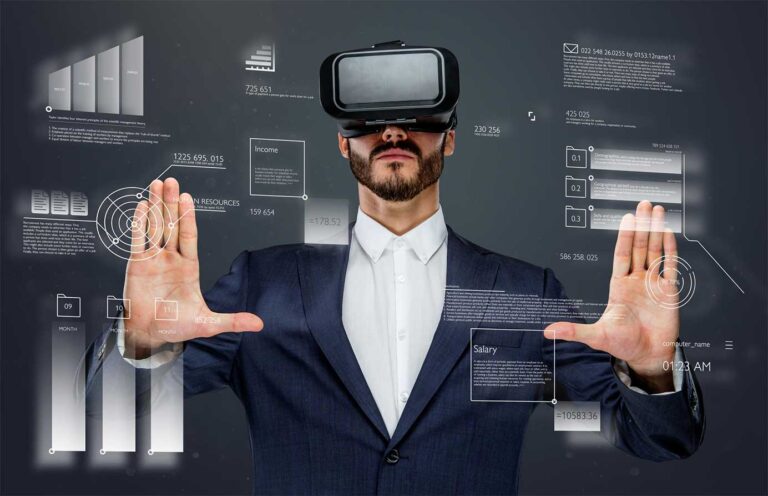
Mclub World – Extended Reality (XR) is no longer a concept limited to sci-fi or tech exhibitions. Today, XR has entered everyday environments significantly. From shopping malls to transport hubs, users are experiencing a blend of real and virtual seamlessly. Governments and private sectors now invest heavily in XR infrastructure and applications. This transformation aligns with the growth of smart city ecosystems worldwide. Smart cities prioritize efficiency, safety, and citizen experience through technology. XR helps bridge physical and digital spaces to improve services directly. For instance, virtual signage can guide travelers in train stations effortlessly. Similarly, augmented guides in museums make learning more interactive and personalized completely. These implementations show that XR is practical and not just futuristic dreams. As costs go down, more institutions find it feasible to adopt XR rapidly.
Augmented Reality (AR) overlays digital content onto the physical world with precision. This enhancement helps users make informed decisions in real time. In retail, for instance, AR lets shoppers visualize products inside their homes first. Furniture can be previewed to fit size and style without guesswork anymore. Restaurants use AR menus to show real-life previews of meals instantly. Even street navigation now includes AR-based arrows guiding pedestrians toward their destination clearly. Municipalities develop apps where citizens can point phones at buildings for information. These simple additions add value to daily life in small but meaningful ways. The benefit lies in smoother interaction with one’s surroundings through contextual digital cues. Cities using AR can also improve accessibility for people with disabilities dramatically.
“Read More: 10 Highest Paid NBA Basketball Players in the World, and have the most Trophies”
Virtual Reality (VR) offers immersive environments for training, education, and engagement. City governments now use VR to train emergency responders under realistic conditions efficiently. Without real danger, teams can simulate fire rescues, crowd control, or disaster management well. Schools are adopting VR to take students on virtual field trips beyond physical boundaries. History classes now include tours through ancient Rome or the pyramids of Egypt entirely. Public libraries use VR booths to provide access to premium learning content affordably. For civic engagement, some cities offer VR tours of urban planning projects before construction begins. Residents can give feedback after virtually walking through a proposed park or road. This builds stronger community trust in government projects using immersive consultation.
Mixed Reality (MR), combining AR and VR, is transforming how infrastructure teams operate daily. Utility workers wearing MR headsets can see underground pipes through digital overlays instantly. This reduces digging errors and speeds up repairs on roads or sidewalks safely. In construction, MR allows architects to walk through 3D models of buildings on-site visually. Engineers detect design flaws before they become costly mistakes through MR-enabled simulations. Maintenance crews use MR to overlay instructions while servicing complex equipment hands-free. This technology increases accuracy and reduces downtime for city facilities significantly. Public transport systems benefit by training drivers using MR-based simulators that mimic real traffic conditions. Mixed Reality proves essential in ensuring safer and more effective city operations consistently.
“Read About: Culinary Travel Takes the Lead in Global Tourism Trends“
Tourism boards across cities use XR to boost attraction engagement and visitor retention successfully. Historical landmarks now offer AR-guided tours narrated in multiple languages with real-time subtitles. Local stories come alive through 3D recreations and holographic characters interacting with visitors naturally. Festivals include XR installations where attendees can experience digital art woven into public spaces dynamically. Tourist information centers provide headsets for VR previews of various districts before physical exploration. Museums incorporate gamified XR scavenger hunts that entertain while educating across generations. Cultural preservation efforts also benefit as XR captures and archives endangered traditions virtually. Even street performances in smart cities can be enhanced through XR visual effects synced live.
As smart cities grow, homes are becoming smarter with XR features built in increasingly. Residents now use AR apps to visualize home renovations before contacting contractors directly. Smart mirrors with XR can show fashion combinations before actual dressing, saving time and space daily. Children use educational AR games that teach science or language while playing safely indoors. For entertainment, family members can join immersive VR worlds together despite physical distance easily. Health monitoring systems integrate XR to display progress or reminders in an engaging interface. XR glasses with AI offer real-time translations and directions while walking outdoors or using transit swiftly. The line between personal and public XR use continues to blur rapidly every year.
This website uses cookies.